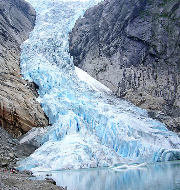State of Global Water Resources Report
The World Meteorological Organization (WMO) recently released its first State of Global Water Resources Report to assess the impact of environmental, climatic and social changes on the world’s water resources. Its objective is to support the monitoring and effective management of freshwater resources across the world at a time when the demand is high and supply is very limited.
What are the key findings of the report?
Streamflow
- The area with below-average streamflow is two times larger than the above-average area when compared with the 30-year hydrological average. The areas having below-average streamflow are:
- South America’s Rio de la Plata area, where drought has remained persistent since 2019
- South and South-East Amazon
- River basins like the Colorado, Missouri and Mississippi in North America
- In 2021, rivers in Africa like Niger, Volta, Nile and Congo experienced less than normal discharge. Similarly, rivers in several parts of Russia, West Siberia and Central Asia also experienced lower-than-average discharge during the same period.
- Places that experienced above-normal river discharges are several North American basins, the North Amazon and Southern Africa (Zambezi and Orange), Northern India and China (Amur river basin).
- Around one-third of the areas that were analysed was in line with the 30-year average.
- Major flood events occurred in China, north India, western Europe and countries affected by Tropical cyclones like Mozambique, the Philippines and Indonesia.
- Countries like Ethiopia, Kenya and Somalia have experienced several consecutive years of below-average rainfall, leading to the occurrence of regional drought in these places.
Terrestrial water storage
- Terrestrial water storage is all water bodies present on the surface of the land and in the subsurface.
- In 2021, places like the US’ west coast, central part of South America and Patagonia, North Africa and Madagascar, Central Asia and the Middle East, Pakistan and North India had below-normal terrestrial water storage (when compared with the average from 2002-2020).
- It was above-normal in central Africa, northern part of South America (specifically the Amazon basin) and the northern part of China.
- In the long term, several places are expected to experience a negative trend in terrestrial water storage. These include Rio Sao Francisco basin in Brazil, Patagonia, the Ganges and Indus headwaters and the south-western US.
- Places like Great Lakes Region, the Niger Basin, East African Rift and North Amazon basin are expected to record positive trend in terrestrial water storage.
- However, the negative trends are stronger than the positive ones. Excessive exploitation of groundwater resources for irrigation purposes are expected to worsen the negative trend.
The Cryosphere
- The cryosphere (places where glaciers, snow cover, ice caps and permafrost are present) is the largest natural reservoir of freshwater in the world.
- Changes to cryosphere water resources affect food security, human health and ecosystem, leading to significant impact on economic and social developments. These changes can also cause river inundation and flash floods because of glacier lake outbursts.
- Due to the rising atmospheric temperatures, the annual glacier run-off will increase until reaching the point called “peak water”, after which run-off declines.
- The long-term projections of the changes in glacier run-off and the timing of peak water are important inputs for making long-term decisions required to improve the climate adaptation capabilities.
- The future assessments by the WMO’s State of Global Water Resources will provide incentive to regularly assess the changes in the cryosphere and changes in the availability of water resources at basin and regional levels.
Month: Current Affairs - December, 2022
Category: Environment Current Affairs • Reports & Indexes Current Affairs


